John Ryan, a London-based journalist and analyst focused on retail design and strategy, formed part of the impressive speaker line-up at the Broll-sponsored South African Council of Shopping Centres (SACSC) Annual Congress, held in Cape Town last week.
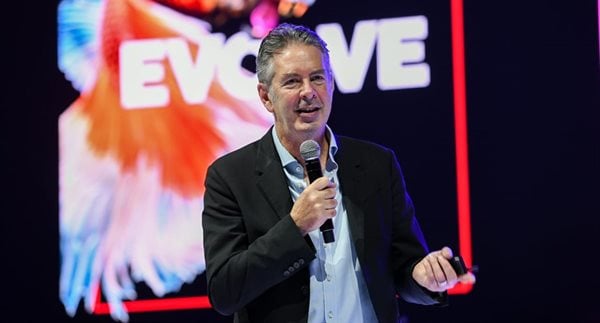
John Ryan
As stores editor of Retail Week, online editor of retail design magazine MiND and European editor of VMSD, Ryan has written about the sector for almost two decades. Who better then to share a glimpse into ‘What's New and What Matters’ in the global modern retail environment?
Balancing online and offline
As a growing number of consumers opt for the convenience of online shopping, traditional retailers need to move away from the tired model of cramming stores full of product to sell.
Still, for all its practicality, online shopping is not an incredibly positive or inspirational experience. “The best physical retail that you may see is always better than the best online,” said Ryan.
E-tailers that understand this have taken to opening physical stores in which they’re able to offer shoppers a multisensory experience that can’t be delivered online. Importantly, the sweet spot for the modern, tech-savvy shopper is a store that seamlessly merges the digital with the physical.
Ryan referenced the McDonald’s to Go format recently launched in the UK, which aims to make fast food even faster.
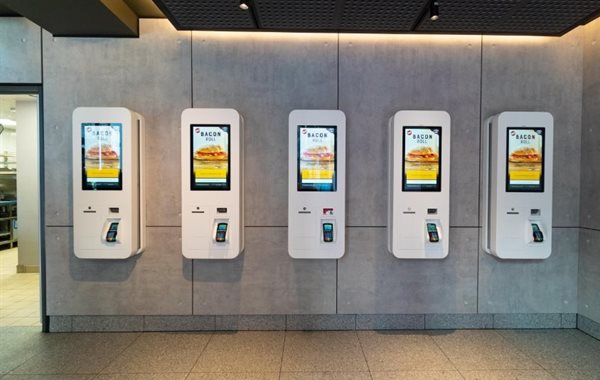
McDonald’s to Go
Exclusively catering to takeaways, the M to Go restaurants offer a limited menu, with customers ordering online or via the on-site touch-screen kiosks. Customers collect at the counter, without having to contend with queues, and because there’s no option to sit down and eat, the space is cleaner than one’s average McDonald’s restaurant.
The physical store is not dead, but its function has changed, said Ryan. Samsung’s Kings Cross store in London is a prime example of using a retail space to offer customers a unique experience and not just push product. In fact, there’s no merchandise to purchase within the store whatsoever.
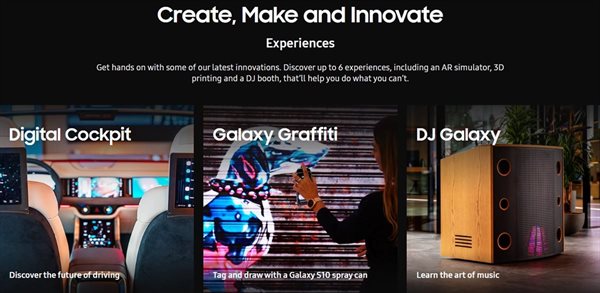
Some of the offerings at Samsung's experience store in in Coal Drops Yard, King’s Cross, London.
“You can't buy anything to take away, but you can sit in a car of the future and drive it virtually, then you can use a digital spray can and do virtual graffiti, and later treat yourself to a coffee,” Ryan explained.
Die-hard shoppers can choose to place an order online in the store to be delivered at home.
Catering to social animals
Ryan described Alibaba’s offline concept Hema (Freshippo) in Hangzhou as a tech-filled ‘store’ that is somewhere between a fulfilment warehouse and a food hall-cum-restaurant. The emphasis here is on fresh food, and with everything being digitally-wired, a wealth of product information is easily accessible to shoppers if they just scan the QR codes attached to the products.
While Hema looks like a traditional supermarket in many ways, it has an in-store dining option that's unique in that you can select produce in store to have prepared and served to you in the on-site restaurant.
“Supermarkets today often have some form of in-store dining option, but it usually accounts for 1% maybe 2% of revenue. And it's usually at the end of the shopping journey and is more of an afterthought. In-store dining at Hema accounts for 30% of revenue - so they've clearly done something right,” Ryan said.
State of the (super)market
Ryan said that retailers have spent almost 60 years becoming slicker and faster, working on the principle of ‘get in, get it and get out’. But is this what shoppers really want?
“There is a sense that as technology moves forward, our desires are for something that is slower and more ‘natural’ – backed by (largely hidden) technology,” he said.
Old-fashioned supermarkets are taking a back seat, with new designs formulated around the concept of a traditional market. The new-age supermarket is designed to impart a feeling of nostalgia and encourage browsing and community. Aisles are swopped for counters, ceilings are lower and there’s more natural light.
Ryan referenced the Marks and Spencer Food store in Battersea, London. Here, shoppers on the prowl for the freshest herbs can pick their own from the in-store glass herbarium.
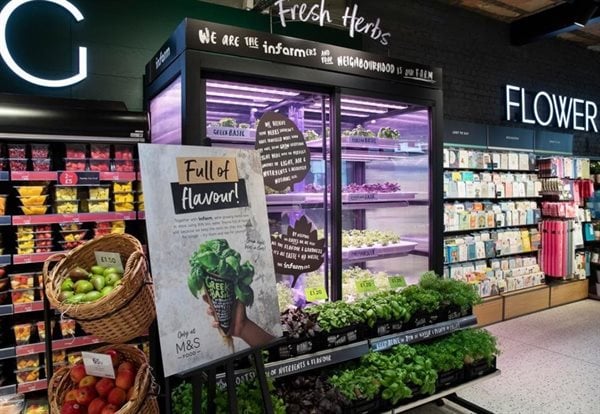
Herbarium at Marks and Spencer Food in London.
Fewer, but better destination stores
The next emerging trend Ryan mentioned was the move to rolling out fewer – and usually bigger – destination stores. Once again, the goal here is to slow consumers down and have them spend quality time with your brand.
The impressive Starbucks Reserve Roastery is a prime example. Large and impeccably designed, there are now six roasteries spread across the globe, where customers can spend the better part of their day drinking coffee in a variety of ways or sipping on something alcoholic from the bar.

Starbucks Reserve Roastery
The real attraction though is that Starbucks makes a show of the roasting process, creating a form of retail theatre from a standard process that most coffee brands keep hidden.
He also pointed to the need to do things in an alternative, unexpected way within these destination stores.
Luxury brand Louise Vuitton are masters at this game, dabbling in everything from holographic window displays to launching a pop-up shop covered entirely in neon green.
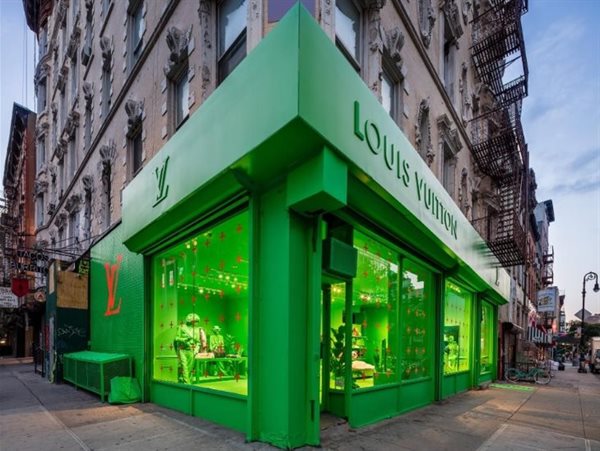
Louise Vuitton New York City pop-up
New from old
Ryan touched on retail models that are breathing new life into what may be considered redundant categories. The Duoyun bookstore, situated on the 52nd floor of the Shanghai Tower, offers readers and customers more than 60,000 books and a unique reading environment at a height of 239 metres.
“It’s an old commodity in a hyper new 21st Century city. Even young people who don't read books would go here.”
The standard restaurant conveyor belt also got a slight makeover recently. Instead of the expected sushi fare, you’ll find no fewer than 25 varieties of cheese rotating on a 40-metre conveyor belt at Pick & Cheese at Seven Dials Market in London.“It’s about taking the expected and putting it into an unusual context,” Ryan said.
And that’s just what Birkenstock has done at its new 1774 showroom in Paris. Housed in a 19th-century apartment, it’s designed to look like an stylishly-furnished living space, with Birkenstock shoes inconspicuously dotted throughout the rooms.
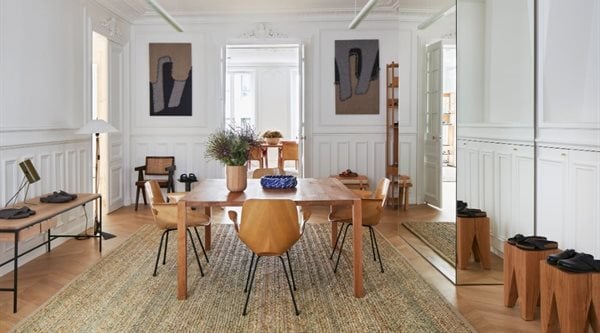
Birkenstock 1774 showroom
Stores without staff
The staffless store model is still in the developmental phase, and is by no means flawless, but its value lies in its sheer convenience.
Chinese retail startup BingoBox is open 24 hours and stocks roughly 300 different products. It features a staff-free smart checkout counter, RFID and computer vision to keep track of items, QR code scanning for users to enter the store, and Alipay and WeChat Pay payment support.

BingoBox
Amazon, meanwhile, has opened 18 Amazon Go cashierless stores since launching the concept to the public in January 2018.
“They’re convenience stores. You’re able to go in there at 2am in the morning to buy stuff that you didn't remember to buy when you were in the supermarket,” said Ryan.
Innovation should be the norm
He cautioned to be aware of buzzwords like ‘disruption’, because it ultimately boils down to differentiation. “If you don't ‘disrupt’, you're not much of a retailer. If you don't innovate you're not doing your job.”
Ryan closed with the following takeaway points:
• Don’t abandon the old in favour of the new
• Physical shops matter, whether you’re online or offline
• Harness the handset, but don’t let customers look at the handset rather than your shop
• Shoppers have time to slow down – make it worth their while
• Experience/disruption/innovation are all just ways of saying ‘give me a reason to come into your shop’
• Robots and tech have their place, but they need a human face
Click here for further coverage of the SACSC Congress.





















































